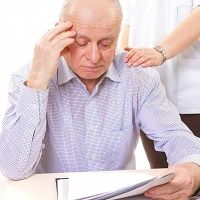Article
Testosterone Levels Affect Sexual Function in Older Men
Author(s):
A pair of studies provides further information about the positive association between testosterone levels and sexual desire and activity in older men.

A pair of studies provides further information about the positive association between testosterone levels and sexual desire and activity in older men.
The first measured correlations between total testosterone, free testosterone, estradiol and sex hormone-binding globulin (SHBG) and various measures of physical function in 788 men who were at least 65 years old.
All of the men were participants in the Testosterone Trial, which will eventually measure the effect of testosterone supplementation on the physical function senior men with initial serum testosterone below 250 ng/dL.
This baseline study used question 4 of the Psychosocial Daily Questionnaire to measure the sexual function of 470 men, the FACIT-Fatigue Scale to measure the vitality of 474 men and the 6-minute walk test to measure the physical function of 388 men.
It found that men that higher levels of total testosterone (up to the 250 ng/dL ceiling) were significantly associated with higher levels of sexual desire (p=.034), erectile function (p=.004) and sexual activity (p=.024).
Similar relationships held true for higher levels of free testosterone but there were no correlations, positive or negative, between estradiol or SHBG and any of those metrics.
None of the 4 hormones, moreover, was associated in any significant way with measures of FACIT-Fatigue, PHQ-9 Depression or Physical Function-10 scores, or gait speed.
The study authors, who published their findings in the Journal of Clinical Endocrinology & Metabolism, noted that many prior studies had measured associations between testosterone and sexual function but that their finding remained significant because it showed the relationship survived the effects of aging and the normal comorbidities that cohort members suffer.
The real test, of course, hinges upon the longitudinal effects of testosterone supplementation for men who participate in the study.
Those figures won’t be out for some time, but the second of the published papers demonstrated a significant connection between testosterone and both sexual desire and activity over a 2-year period.
That study, which also appeared in the Journal of Clinical Endocrinology & Metabolism, compared hormone levels and self-reported sexual function at baseline and after 2 years in 1,226 men who were at least 70 years old to start.
Researchers used standard tests to measure serum testosterone, dihydrotestosterone, estradiol, estrone, SHBG and luteinizing hormone and standard questionnaires to measure sexual desire, sexual activity and erectile function.
Baseline hormone levels did not predict decline in sexual function over the 2-year period, but the degree of decline in serum testosterone over that period (whatever its raw starting and ending points) was strongly related to the degree of decline in both sexual desire and sexual activity (but not to any change in erectile function) over the same period.
Each 1-standard-deviation decrease in testosterone from baseline to year 2 was associated with a multivariate-adjusted odds ratio of 1.23 (95% confidence interval, 1.12—1.36) for decline in sexual activity.
The effect of testosterone decline on sexual desire was similarly large, even though the magnitude of the measured testosterone declines tended to be quite small, generally less than 10%.
Changes in other hormone levels were not significantly related to changes in sexual function.
“While these observational findings cannot determine causality,” the study authors wrote, “the small magnitude of the decrease in serum testosterone raises the hypothesis that reduced sexual function may reduce serum testosterone rather than the reverse.”




